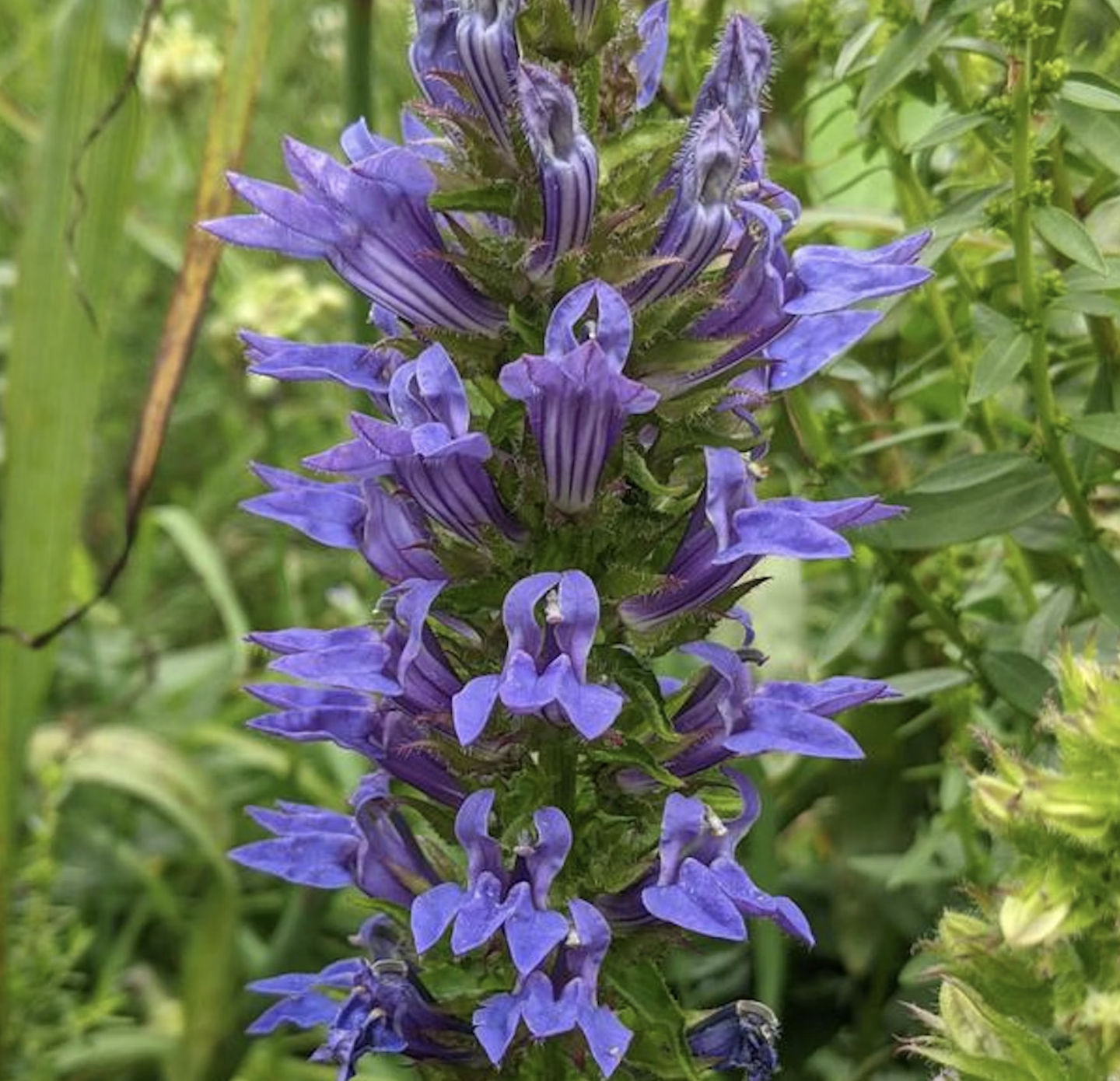I’ve Been A Professional Gardener For Over 30 Years And These Are The 8 Must-Have Outdoor Annual Plants I Believe Every Garden Needs
Filling a garden with annuals is a pleasure that is constantly evolving and full of surprises – but there are some outdoor annual plants every garden should have, every year
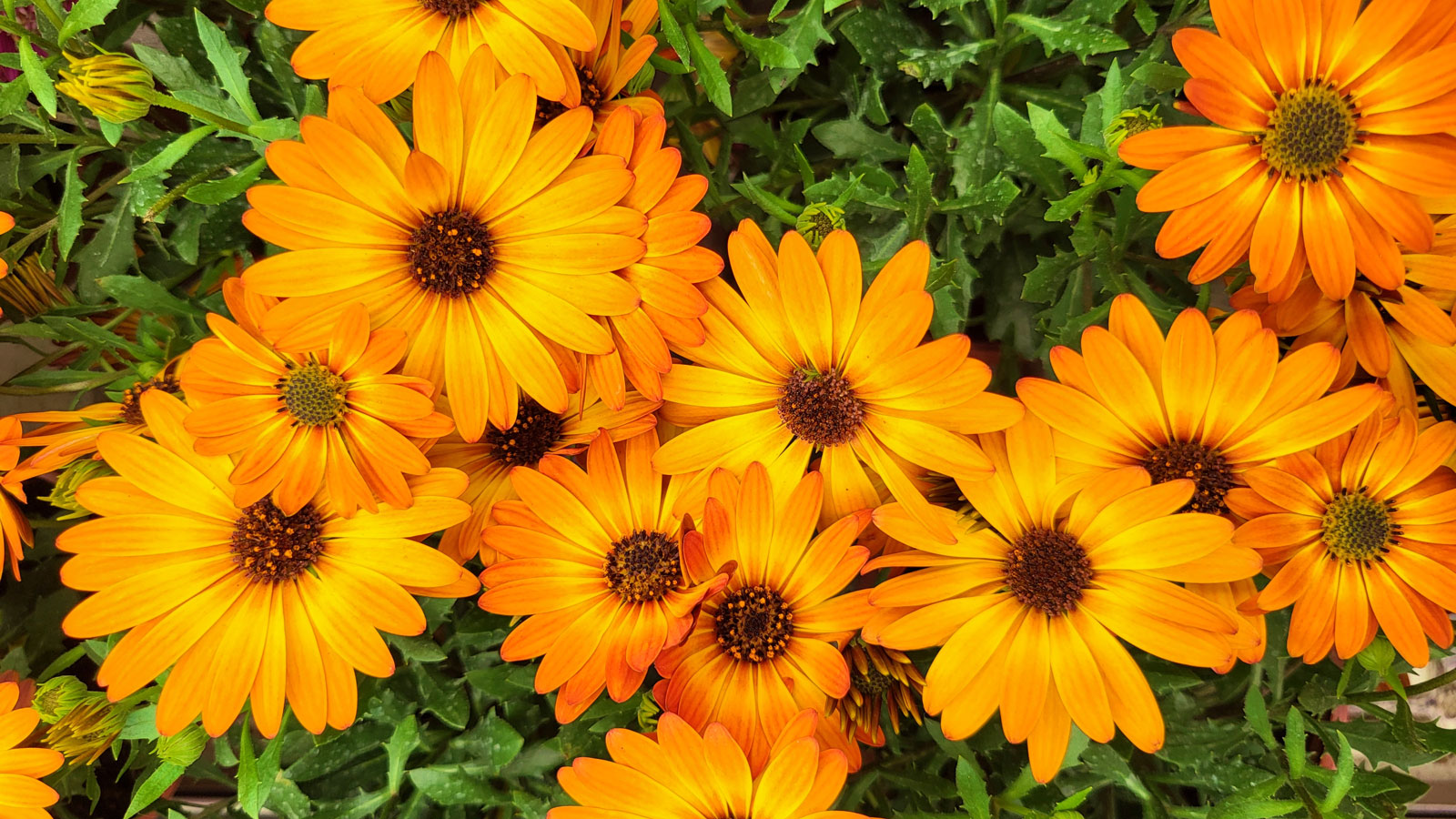

Amy Draiss
Annuals are wonderful flowering plants that have diverse forms, sizes, and colors. While I am a penny pincher and usually gravitate towards perennials which will be with me for years, I still get a tingle when the annuals start coming out. And inevitably, I’ll pick up some annuals to create the next garden masterpiece.
I also grow many outdoor annual plants from seed which I save year after year. Annuals are usually in nurseries, supermarkets and big hardware store garden centers well before many of the other types of plants. They are often blooming as they sit on those big racks, a delicious enticement to open your wallet and partake.
I have had excellent luck with certain species of annual, while others have failed me miserably. Still others tend to leave seed that will sprout the next year, which is sometimes welcome but not wanted when they take over a garden space.
It is a good idea to have some experience or knowledge about your plants so you know what they will do, where to put them for the best effect and health, and how to care for each different variety. I recommend you take some time and check out my top favorite annual outdoor plants and see if they might be right for your landscape.
Choosing Outdoor Annual Plants
Annuals are fun because they can be used in hanging baskets, in ground applications, or container gardens. If you are purchasing plants for full sun containers, inspect the container and see how the roots are through the drainage holes. You should see a few which means a robust root system, but the roots should not be tangled and grown into the pot. These will be difficult to separate and root damage can occur. If the container is dry, soak it in water before you plant it. Use good potting soil and amend with a bit of compost to enrich it.
If planting in the ground for the longest blooming annuals, remove roots, rocks, and weeds from the site prior to planting. When you take the plant out of the container, gently fluff up the roots and spread them out in a hole that has been dug just a bit larger than the root ball. Backfill and water the soil to settle it around the roots. Wait a few days before you add fertilizer to let outdoor annual plants get used to their surroundings.
1. Calibrachoa
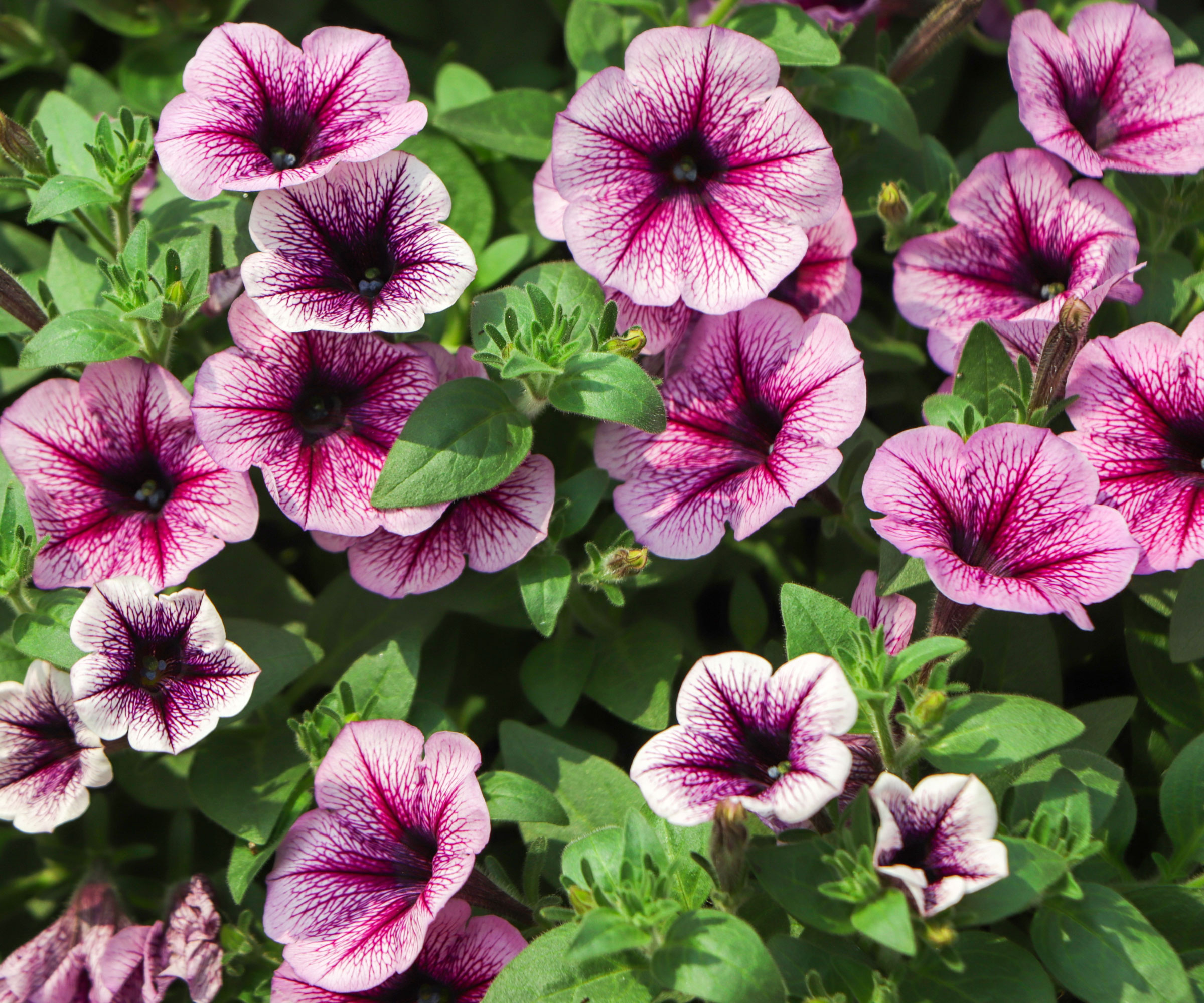
To my eyes, Calibrachoa looks like diminutive petunias and they make sensational summer flowers for pots. These plants need 6-8 hours of sun per day to flourish. Calibrachoa plants are in continuous flowering so the plant never looks bare. You can pull off the spent flowers but they generally fall off themselves. In some zones, they can be treated as short lived perennials, but in my zone they are annuals.
Calibrachoa flowers come in red, orange, pink, yellow and white, with off tones like coral and varieties with white and a color striping the petals. I love ‘Superbells Double Vintage Coral Million Bells’ by Cavicchio Greenhouses, available at Walmart. For the best outdoor annual plants, keep them consistently moist and don’t allow them to dry out completely. They will spread and sprawl throughout the season.
2. Tassel Flower
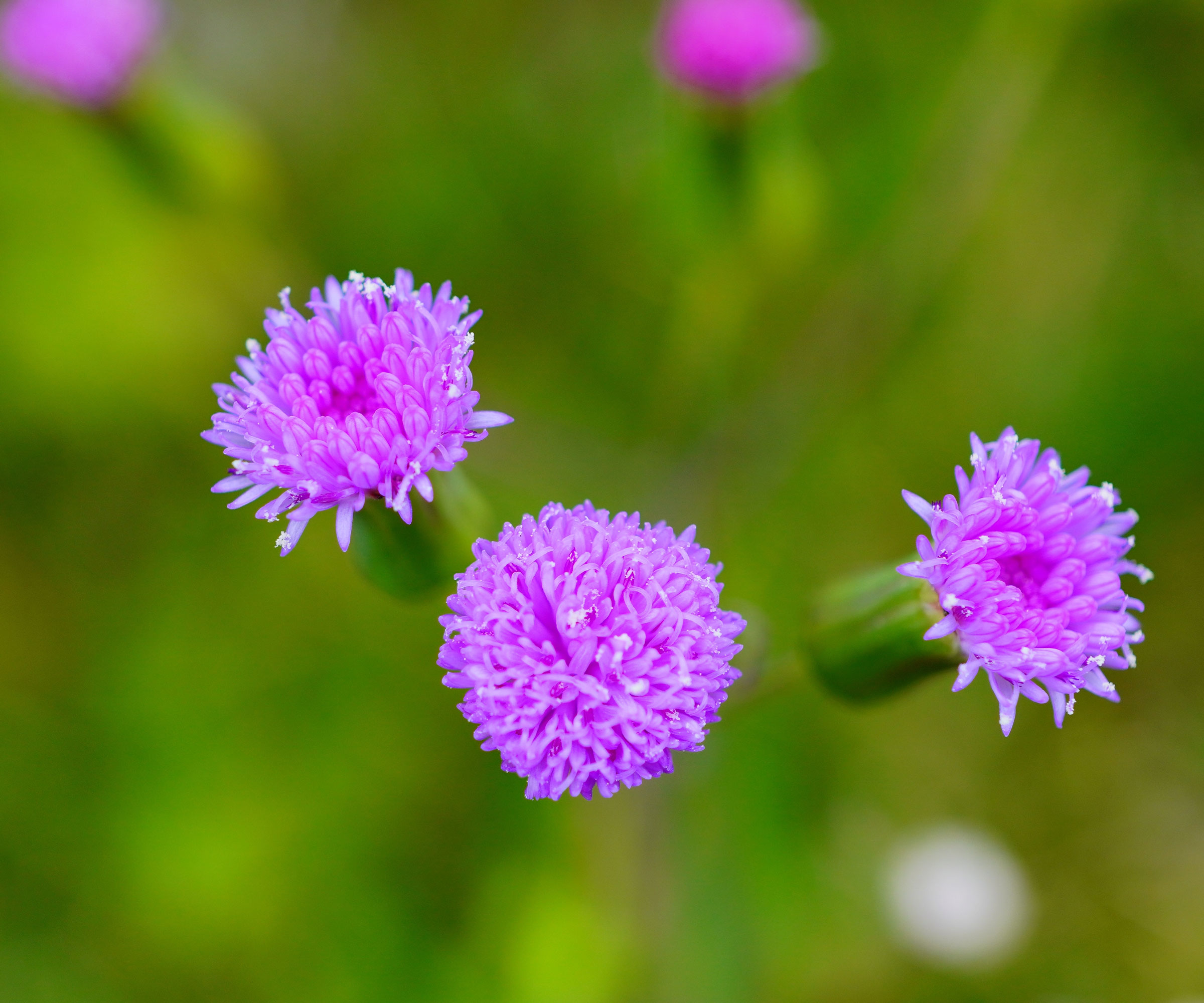
The tassel flower (also known as the Irish poet tassel flower) is native to Asia, Australia, Africa and coastal nations. The tiny flowers of these outdoor annual flowering plants look like little makeup brushes in hues of orange, red, and lavender.
The stems are slender and topped with clusters of the tufted blooms. These plants prefer slightly acidic soil that drains well. Keep moderately moist and deadhead the spent blooms to encourage further budding.
Sign up for the Gardening Know How newsletter today and receive a free copy of our e-book "How to Grow Delicious Tomatoes".
3. Begonia
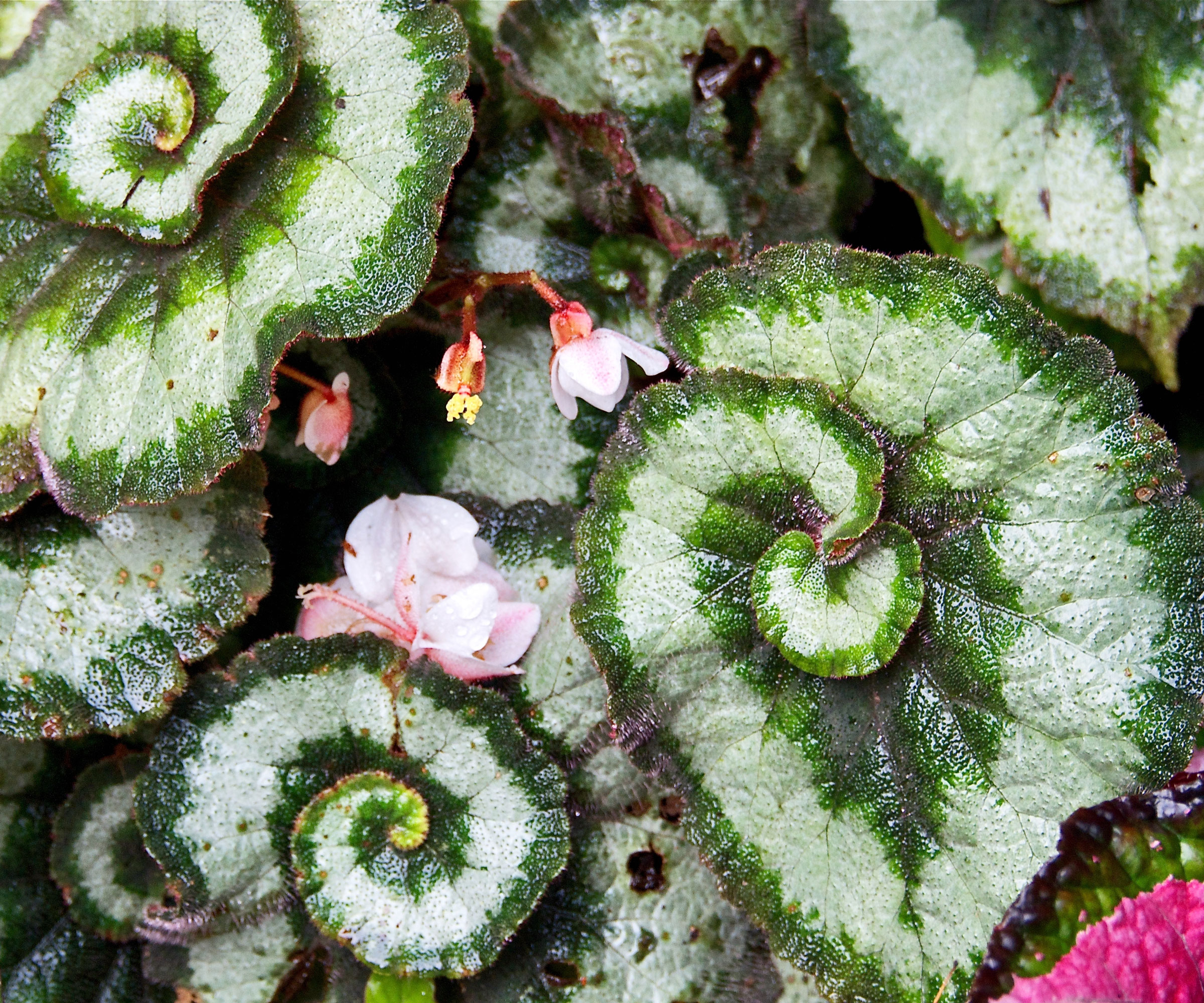
These classic plants are ideal for slightly shaded or low light areas of the garden. There are both tuberous and wax leaf begonias, as well as painted leaf varieties. Begonias are considered self cleaning and do not require deadheading to look their tidy best. Begonias prefer bright, indirect light and moist (but not soggy) soil.
They should be fed regularly during the growing season with balanced water-soluble fertilizer every 2-4 weeks. Begonias can get leggy, so pinch off excessive growth to a growth node for a new flush of foliage. You can also grow begonias indoors, such as Trending Tropicals by Costa Farms, available in the Gardening Know How Shop.
4. Caladium
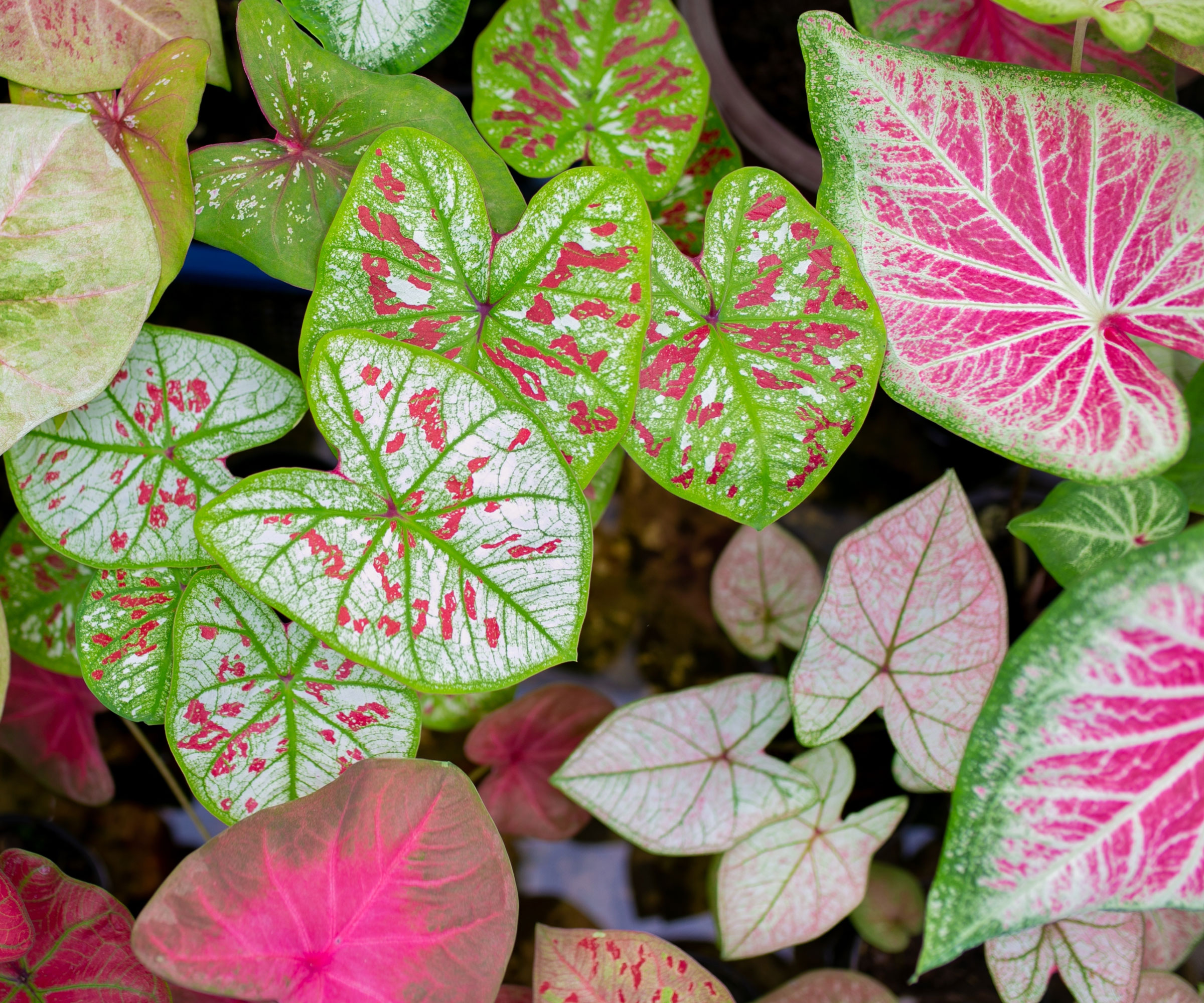
Caladium doesn’t have a discernible bloom but it doesn’t need one. The plants boast heart large, heart-shaped, tropical leaves in the most astounding colors. The veins, midribs and edges develop rich, saturated hues of pinks, mauve, dark and light green, silver, lavender, red, rose, salmon, bronze, and more. I love ‘Dragon Wing’ from Burpee with its shiny leaves and hanging stems for baskets.
Caladium plants do best in bright, indirect light but can handle some sun. Avoid southern and western exposure which can burn the beautiful leaves. Keep the soil moist and the plant will perform wonderfully until first frost.
5. Teddy Bear Sunflower
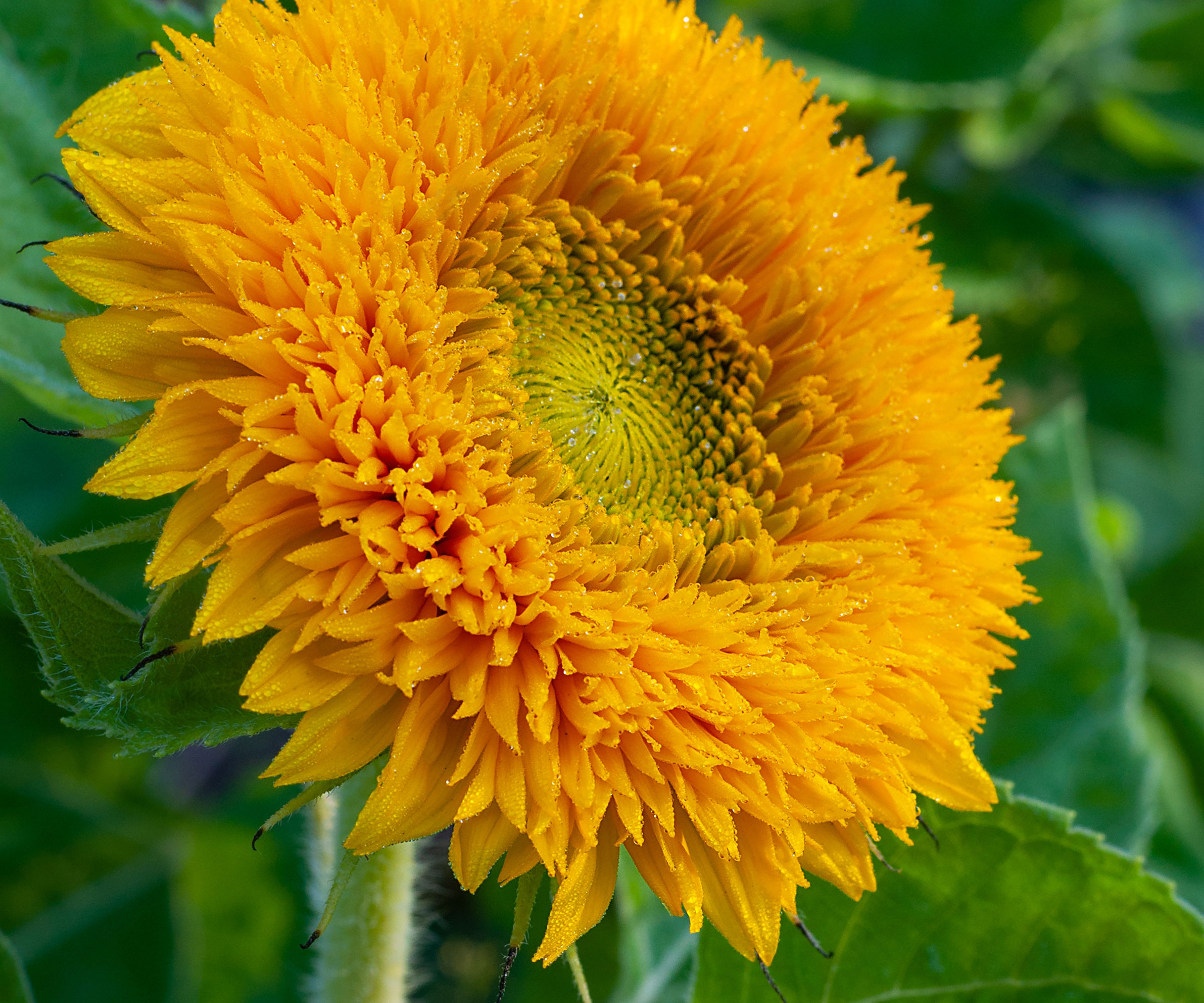
Teddy Bear’s have a flower that resembles a plush toy’s fabric. The fuzzy petals are closely crowded together for a fantastic tactile sensation when stroked. These flowers aren't like the usual ones you might see, which tower above other garden plants. They only grow about knee high, but they are some of the most colorful plants to grow.
Teddy bear sunflowers need as much sun as possible, up to 12 hours. You need to keep plants watered regularly – but otherwise, these are low maintenance powerhouses. You can get ‘Double Dwarf’ Teddy Bear Sunflower seeds from Amazon.
6. Coleus
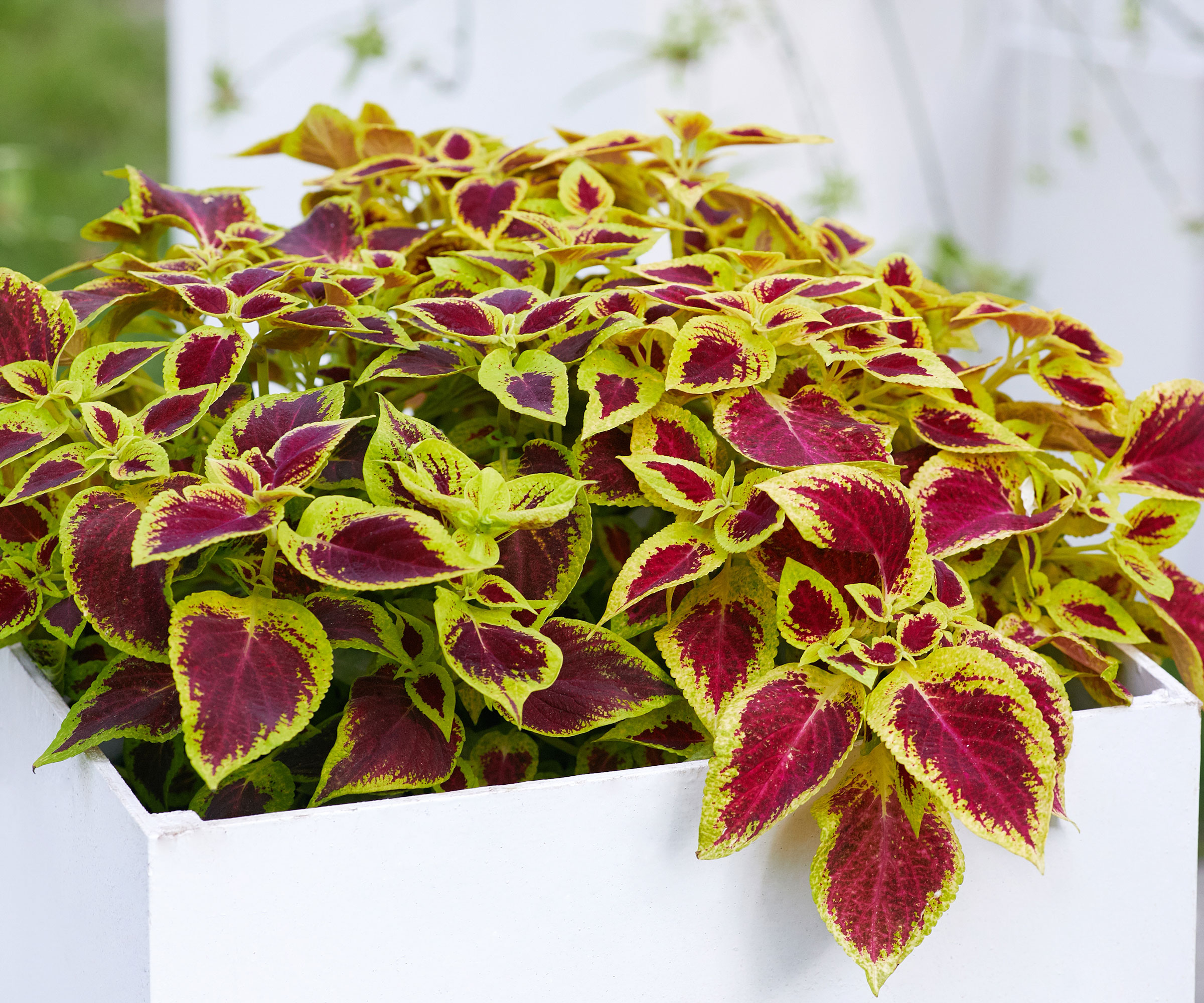
Here’s another plant without obvious flowers – but the foliage is breathtaking. Think of any color, and coleus can be found in that hue. You’ll often see unexpected color combinations of wine, pink, salmon, bronze, lime green, orange, salmon, magenta… the list goes on. One of my favorites is Coleus ‘Kong’, available from Walmart, with its rich lime greens, browns and reds.
The leaves are painted with splashes of multiple colors. Some varieties can tolerate full sun but most need partial shade. Bright, noon day sun can burn the leaves. For the best coleus plant care, water when the top of the soil is dry to your first knuckle.
7. Canna
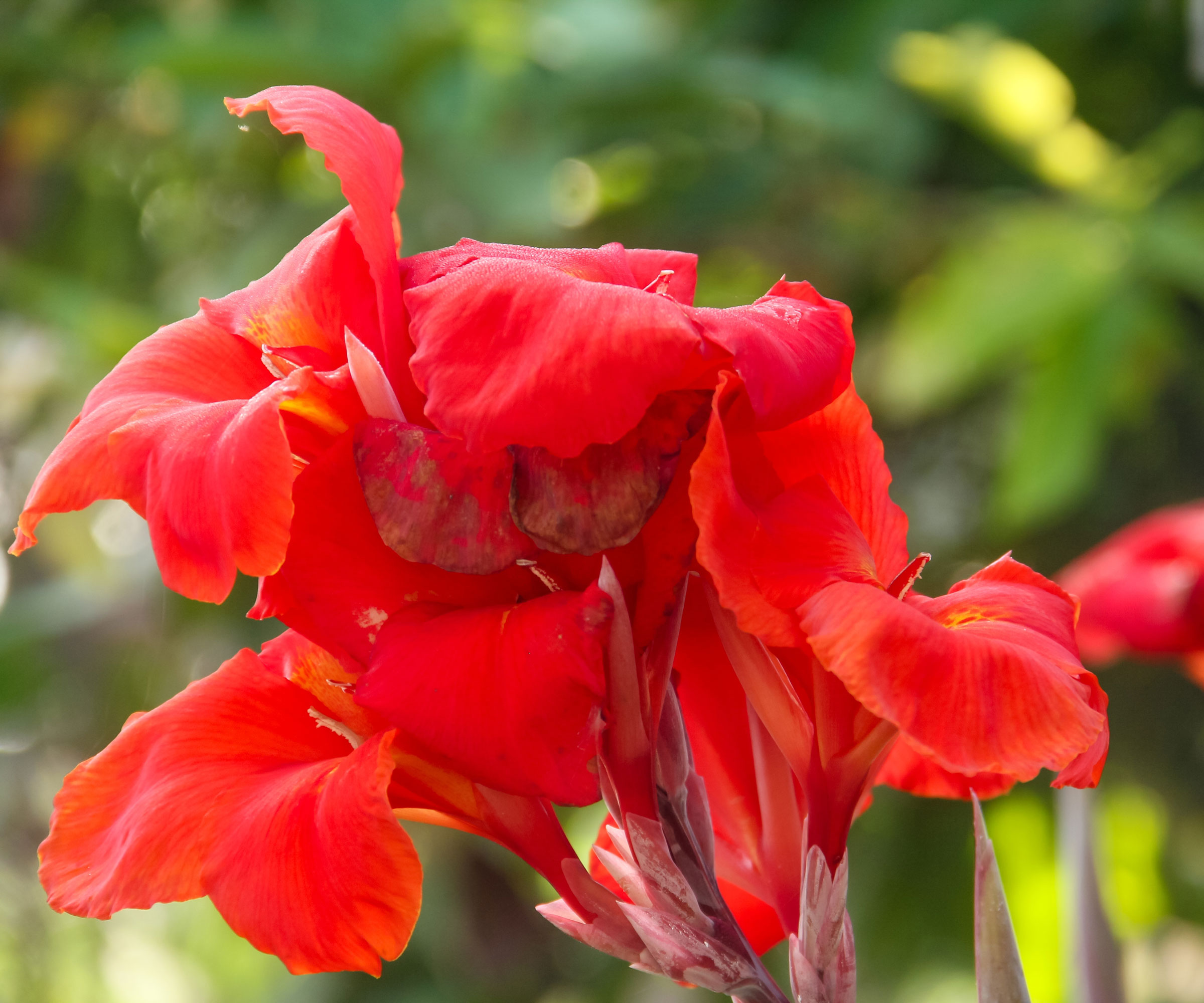
If you want tropical appeal in your garden, try growing canna lily plants. They are not cold hardy and will die if the tuber is exposed to a hard freeze. However, you can dig up the tubers and save them indoors for the next season. Their height varies from knee high to over your head! Their exotic flowers come in many colors.
These amazing plants need full sun and regular moisture. Remove spent blooms to improve the appearance of the plant. When all the flowers are gone from a stem, remove the stem entirely, but let the foliage persist.
8. African Daisy
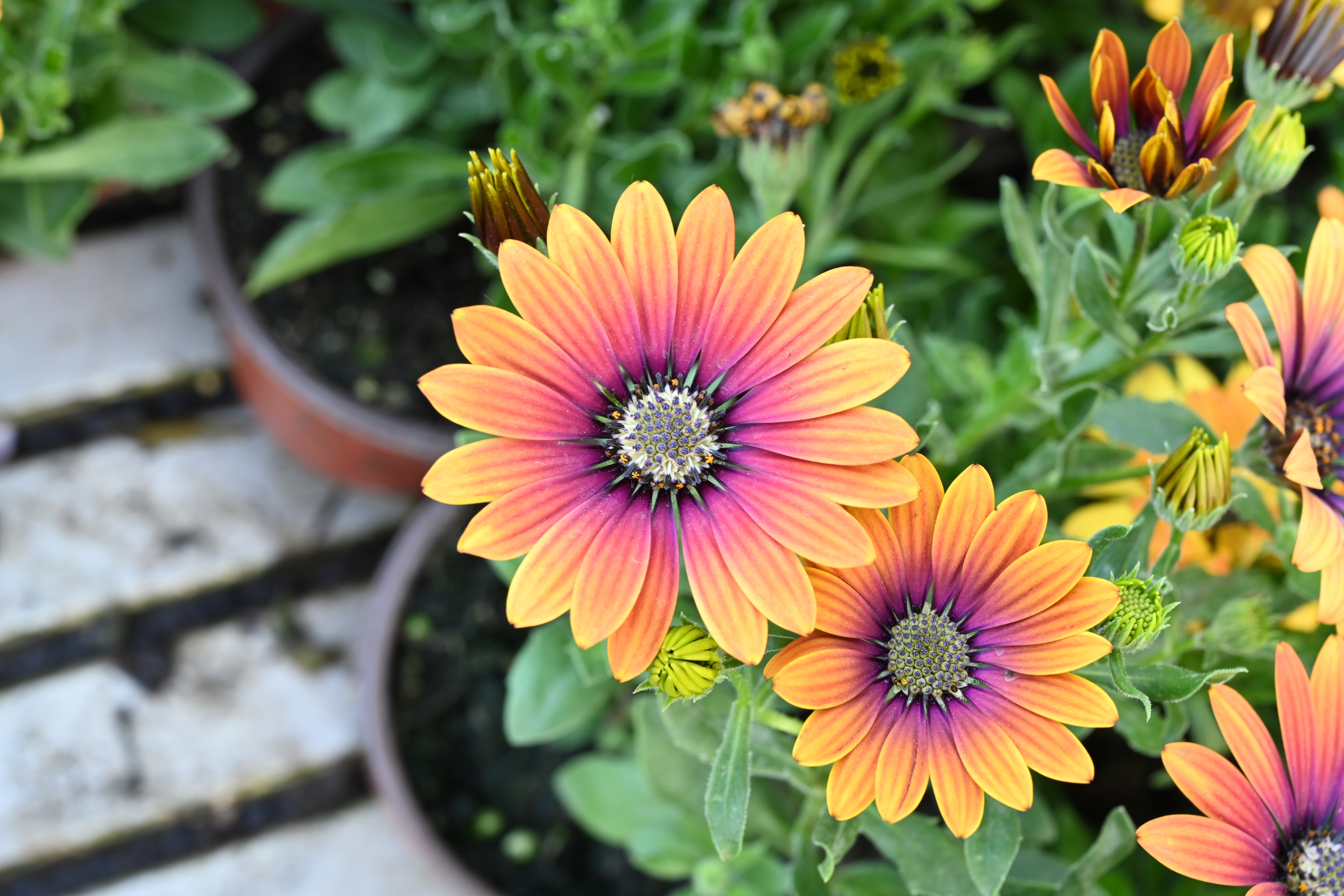
The deep hues of these rayed flowers are impressive. African daisies (also known as osteospermums) need full sun to maximize blooms. Deadhead regularly to encourage new flowers. Their soil must be well draining. Water when the soil is dry to the touch. I really like ‘Bright Lights Horizon Sunset’ Osteospermums from Proven Winners, available at Lowes.
This article features products available from third party vendors on the Gardening Know How Shop. Keep in mind that our plant inventory is limited - so if you’re thinking of purchasing, don’t wait!

Amy Grant has been gardening for 30 years and writing for 15. A professional chef and caterer, Amy's area of expertise is culinary gardening.
- Amy DraissDigital Community Manager
